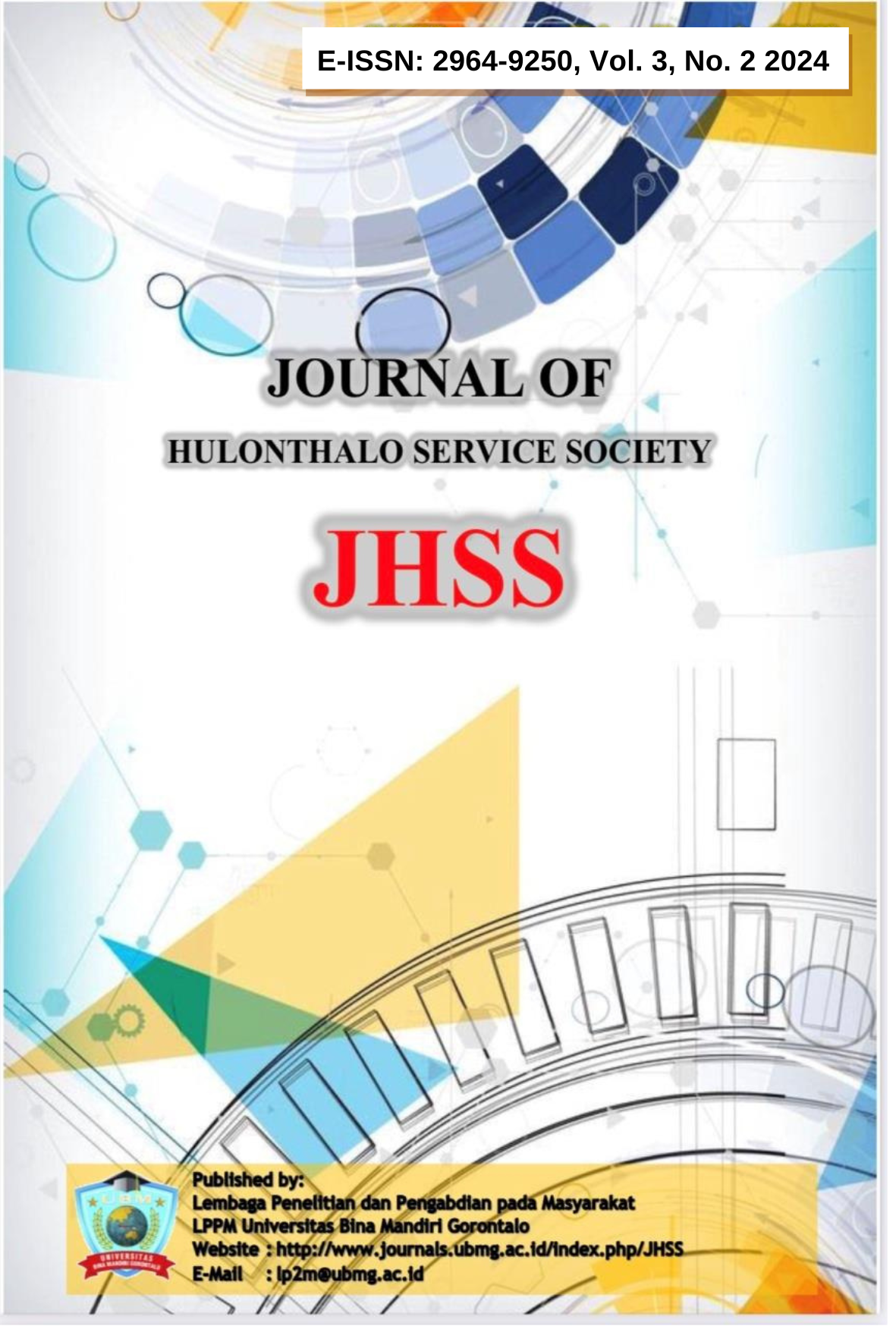SOSIALISASI TENTANG PERILAKU HIDUP BERSIH DAN SEHAT (PHBS) DI SDN 9 KABILA BONE, DI DESA OLUHUTA, KEC. KABILA BONE KAB. BONE BOLANGO
Abstract
The purpose of this community service is to increase the knowledge and awareness of elementary school children about the importance of implementing clean and healthy living behavior (PHBS). The implementation methods used in community service activities are; 1) problem identification; 2) formation of a proposing team; 3) observation of the activity location; 4) data collection; 5) identification of activity participants; 6) preparation of materials, facilities, and supporting infrastructure; 7) delivering materials; 8) development of local resources; 9) documentation; 10) reporting; and 11) publication. The results of this community service are that school children at SDN 9 Kabila Bone, Oluhuta Village, already understand the importance of implementing clean and healthy living behavior. The school and the Oluhuta Village community work together to be able to utilize knowledge about the socialization and training of how to wash hands properly and correctly (PHBS) for school children at SDN 9 Kabila Bone, Oluhuta Village.
References
[2] K. S. Dewi, “Buku ajar kesehatan mental.” LPPMP Universitas Diponegoro, 2012.
[3] M. H. Idris, “Penerapan PHBS di Satuan PAUD,” Al Qalam, vol. 10, no. 1, 2022.
[4] E. Nurmahmudah, T. Puspitasari, and I. T. Agustin, “Perilaku hidup bersih dan sehat (PHBS) pada anak sekolah,” ABDIMAS: Jurnal Pengabdian Masyarakat, vol. 1, no. 2, pp. 46–52, 2018.
[5] I. Nurhidayah, L. Asifah, and U. Rosidin, “Pengetahuan, sikap dan perilaku hidup bersih dan sehat pada siswa sekolah dasar,” The Indonesian Journal of Health Science, vol. 13, no. 1, pp. 61–71, 2021.
[6] L. Yusanti, K. Dewiani, and Y. Purnama, “Pendidikan Kesehatan Perilaku Hidup Bersih dan Sehat Tentang Cuci Tangan yang Benar di SD Negeri 24 Kota Bengkulu,” Logista-Jurnal Ilmiah Pengabdian Kepada Masyarakat, vol. 4, no. 2, pp. 384–389, 2020.
[7] U. Isnainy, M. A. Zainaro, L. Novikasari, L. Aryanti, and P. D. Furqoni, “Pendidikan kesehatan tentang perilaku hidup bersih dan sehat (PHBS) di SMA negeri 13 Bandar Lampung,” Jurnal Kreativitas Pengabdian Kepada Masyarakat (PKM), vol. 3, no. 1, pp. 27–33, 2020.
[8] N. W. W. Asthiningsih and T. WijayantI, “Edukasi personal hygiene pada anak usia dini dengan G3CTPS,” Jurnal Pesut: Pengabdian Untuk Kesejahteraan Umat, vol. 1, no. 2, pp. 84–92, 2019.
[9] S. N. Lestari, E. Hartati, and M. Supriyono, “Gambaran Perilaku Hidup Bersih Dan Sehat (Phbs) Di Sekolah Pada Siswa Sd Kembangarum 02 Semarang Barat,” Karya Ilmiah, 2016.
[10] A. Khairunnisa, A. Maryanah, S. P. Nabila, and M. K. Luli, “Penerapan Perilaku Hidup Bersih dan Sehat (PHBS) pada Siswa-Siswi MI Muhammadiyah 01 Depok,” Jurnal Pengabdian Masyarakat Saga Komunitas, vol. 2, no. 1, pp. 141–147, 2022.












